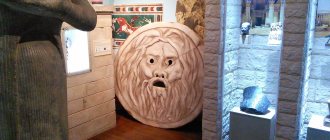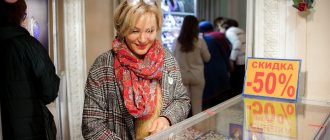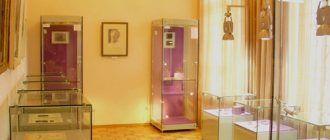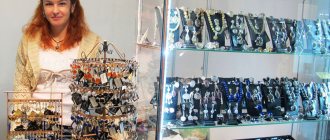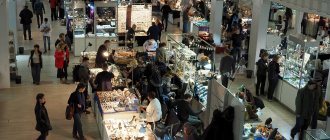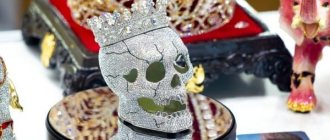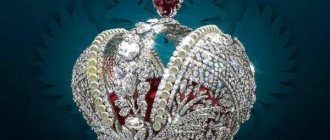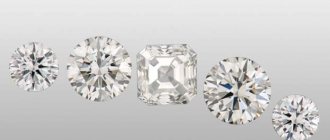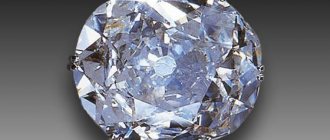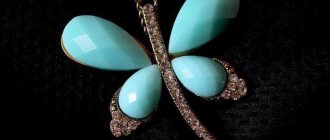Exhibition goals
“Treasury of St. Petersburg” is a regular exhibition held since 2014. Their key goal and task is to bring together jewelry manufacturers and sellers with potential buyers, as well as provide an opportunity not only to demonstrate their own products, but also to sell them directly during the event.
In addition, participation in the exhibition is a good opportunity to get acquainted with industry trends, better study the market, and obtain more information about its prospects. Here you can present your brand and products, conducting a campaign to enter a new market.
Jewelry exhibition “Treasures of St. Petersburg” in the mysterious Palace of Princess Yusupova
The active time to prepare for the New Year has already begun! From November 25 to 28, 2022, for all lovers of exquisite gifts, the exhibition “Treasures of St. Petersburg” will be open in the luxurious interiors of the Palace of Princess Zinaida Yusupova on Liteiny Prospekt. 2 floors, 150 jewelry companies and authors, new jewelry collections fall-winter 2021/2022 and more than 50,000 jewelry and gifts for the New Year. The New Year's atmosphere will be added by a daily drawing of valuable prizes and decorations!
- A bonus for all visitors will be free excursions to the Palace of Princess Yusupova, an architectural monument in the style of the Italian Renaissance and Baroque. Tours will operate daily at 12:00, 15:00, 17:00 and 18:30.
- Entry cost is 200 rubles without an invitation. A FREE invitation ticket for 2 persons can be obtained at the link: https://expospb.com/ticket/
- More information about the exhibition on VKontakte: https://vk.com/spbexpo and by phone +7 (812) 309-84-74
10 halls of decorations and gifts for the New Year: from the silver of Kostroma to the gold of Yakutia, from Christmas tree decorations to porcelain figurines. Prices are 2 times lower than in stores and New Year's discounts.
The exhibition will feature modern and classic collections of mass-produced and handmade jewelry, each with a unique story of creation, inspired by modern trends, the world around us and feminine beauty. The jewelry is elegantly embodied in gold and silver with precious and semi-precious stones, amber and pearls, as well as other stones and minerals. Among the exhibitors are many regions of the country: Yakutia, Western Siberia and the Urals, St. Petersburg, Moscow and the Moscow region, Kostroma region and southern Russia.
You can find the perfect decoration for yourself or as a gift for your family and friends, because the New Year is approaching at cosmic speed, and you need to have time to buy gifts. And jewelry is an absolutely winning gift, especially if given to girls.
Those who love a variety of accessories in their jewelry box will be able to find many stands with modern minimalistic products made of silver and other metals from young designers, as well as fashionable jewelry. Many pleasant surprises await connoisseurs of exclusive items and beautiful things: original silverware based on Russian fairy tales, stone-cutting works by St. Petersburg masters, bone carvings, mosaics, Rostov enamel, lacquer miniatures, original bronze works, antique silver and much more.
An additional opportunity will be that everyone will be able to communicate in person and place an order according to individual wishes from master jewelers presenting their works at the exhibition.
Why you should visit the exhibition:
- Firstly, it is profitable to buy at the exhibition. Prices for jewelry at the exhibition are lower than in retail jewelry stores due to direct sales from the manufacturer. Also, jewelers at exhibitions sell collections from past seasons at large discounts, sometimes even at cost.
- Secondly, the exhibition is a real success for jewelry hunters. People come here for a choice that you won’t find in regular stores.
- Thirdly, a huge selection. More than 150 companies are participating in the exhibition, which will present over 50,000 jewelry of various themes and trends.
A bonus for all visitors will be free excursions to the Palace of Princess Yusupova, an architectural monument in the style of the Italian Renaissance and Baroque. Tours will operate daily at 12:00, 15:00, 17:00 and 18:30. The excursion will be accompanied by a glass of champagne. Don't miss the chance to learn the mysterious history of the building, the legends of the palace and the life of the Yusupov family!
The New Year's atmosphere will be added by a daily drawing of valuable prizes and decorations. In addition, it will be possible to conduct a gemological examination of personal jewelry or jewelry purchased at the exhibition completely free of charge, in order to check the authenticity of the jewelry and estimate its value.
Details and a free invitation ticket are available for 2 persons on the exhibition website https://expospb.com/ticket/
Entrance cost without an invitation ticket – 200 rubles/person
Detailed information about the exhibition on official accounts on social networks:
- VKontakte https://vk.com/spbexpoFacebook https://www.facebook.com/spbexpo/
INFO by phone +7 (812) 309-84-74
- Place: St. Petersburg, Palace of Princess Yusupova, Liteiny Ave., 42
Date/time: November 25 – 28, 2022, 11.00-20.00.
Program of events within the framework of the exhibition Treasures of St. Petersburg. December 2022
A distinctive feature of each “Treasury of St. Petersburg” exhibition, no matter where it is held, is the opportunity for both participants and visitors to take part in the business program events.
Thus, participants have the opportunity to visit various forums dedicated to the problems and prospects of the industry, get acquainted with the proposals of equipment manufacturers, and discuss with industry experts the features of running a jewelry business and ways of its development.
Exhibition guests can attend a series of seminars aimed at increasing general awareness of jewelry and jewelry. This will help you choose products to purchase at a more expert level.
Peterhof - the treasure of St. Petersburg
They say that of all the cities in Russia, two are incomparable - Moscow and St. Petersburg. Most people who know them well put St. Petersburg above Moscow. Including most Muscovites. And among the treasures of the northern capital, special attention is paid to Peterhof. I couldn't agree more with them. I saw him in June, at a wonderful time, when his beauty, revived by the ashes of war, shone even brighter. I want to share this with you.
I will try to offer you the most gentle information about this treasure at the very beginning.
Founded in the early 18th century by Emperor Peter I near Russia's new northern capital, St. Petersburg, Peterhof was to become the most luxurious royal summer residence. The idea of its creation came from Peter I in 1714. He himself is the author of the entire composition of Peterhof. The sketches of Peter I served as material for the architect I. Braunstein when drawing up the master plan for the residence. Peter's documents have been preserved with his instructions on what types of trees to plant, how to lay alleys or how to arrange a drainage system.
The pace of construction was incredible - already in 1723 Peterhof was opened. The seaside residence of Emperor Peter amazed Europe no less than the new capital.
It was no coincidence that Peter the Great chose this place to build the largest fountain system in the world - several powerful springs gushing from underground were discovered here. In 1721, locks and a canal were built, through which water from the Ropshan Heights reservoirs gravitationally rushed down through pipes from a height of 16 meters, raising very high jets into the fountains of the Lower Park of Peterhof.
A beautiful panorama opens from the sea to Peterhof. On the edge of a natural 16-meter terrace is the Grand Palace, in front of which the Grand Cascade shines in gold. In front of the cascade, the most powerful jet of the fountain “Samson breaks the lion’s mouth” rises. The sea canal leads from the Grand Cascade to the sea. The canal divides the Lower Park into two parts - western and eastern. In the eastern part there are: the Monplaisier Palace, the Chess Mountain cascade, Roman fountains, fire-fighting fountains. In the western part there are the Hermitage Pavilion and the Marly Palace, the Cascade of the Golden Mountain and the Fountains of Administration.
Within the framework of this introduction, it is impossible to even briefly describe all the sights of Peterhof.
The most notable of these are:
• The Great Cascade of Peterhof Fountains - built in 1714-21, with a cave, a waterfall staircase, and many gilded bronze statues.
- Great Palace, built in 1714-25. and rebuilt in 1747-52. V.V. Shootings in Russian Baroque style.
- Upper garden with the Neptune fountain.
- The lower park, built in 1714-25, architects I. F. Braunstein, J. B. Leblon, M. G. Zemtsov.
- Marley Palace, built in 1720-23, architect Braunstein.
- Pavilion "Hermitage", 1721-24, architect Braunstein.
- Colonnade pavilions, 1803, architect A. N. Voronikhin.
- English landscape park with Gothic and classical buildings - architect G. Quarenghi.
- Alexandria Park, architect A.A. Menelas.
- Meadow Park with Belvedere Palace 1853-56, architect A.I. Stackenschneider.
According to Peter the Great's plan, Peterhof was to be comparable in splendor to the most famous royal residences in Europe, on the one hand, and to become a triumphal monument to the successful completion of Russia's struggle for access to the Baltic Sea. Both tasks were completed brilliantly. The world's largest system of fountains and water cascades is being created.
The center of the Peterhof ensemble is the Grand Palace - the “crown” residence of the Russian emperors. The magnificent three-story building with galleries and sparkling gilded church domes stretches along the terrace for almost three hundred meters.
The famous architect Francesco Bartolomeo Rastrelli, an unsurpassed master of the Baroque style, worked in Peterhof. The interiors, created by the genius of Rastrelli, are distinguished by an abundance of gilded wood carvings, mosaic parquet flooring from various types of precious wood, numerous mirrors and picturesque ceilings on the ceilings. But for some unknown reason, photography is prohibited in the palace. And these few photographs, taken quietly, cannot convey to you the magnificence that we saw there.
The Great Peterhof Palace was the summer center of the official life of the Russian Empire: important events for the country, parties and receptions, balls and masquerades took place here.
The Lower Park of Peterhof is the most famous part of the palace and park complex. It is this wonderful ensemble with its architectural monuments, fountains and sculptural decorations that brings world fame to the museum-reserve. The lower park was built on the model of the residence of the French king Louis XIV at Versailles in the then fashionable French style. Characteristic features of this style are a strictly geometric layout of alleys, figured pruning of trees and shrubs, exquisite designs of large flower beds, rich sculptural decoration and elegant gazebos.
The Grand Cascade is the main structure of Peterhof's spectacular fountain system. It is unique in size, abundance of water, richness of sculptural decoration, graphic variety of water jets and expressiveness of all details. The Grand Cascade occupies an exceptional position among the most famous historical fountains in the world. This is a brilliant monument to Baroque art.
The ensembles of Peterhof were captured by German troops from September 1941 to January 1944. Artistic treasures were looted or destroyed, trees in all parks were cut down, the Grand Palace was blown up and burned. Statues of Samson, Magus, Neva and many others have been removed.
Peterhof parks have been restored since the first post-war years.
This is very briefly about Peterhof..
